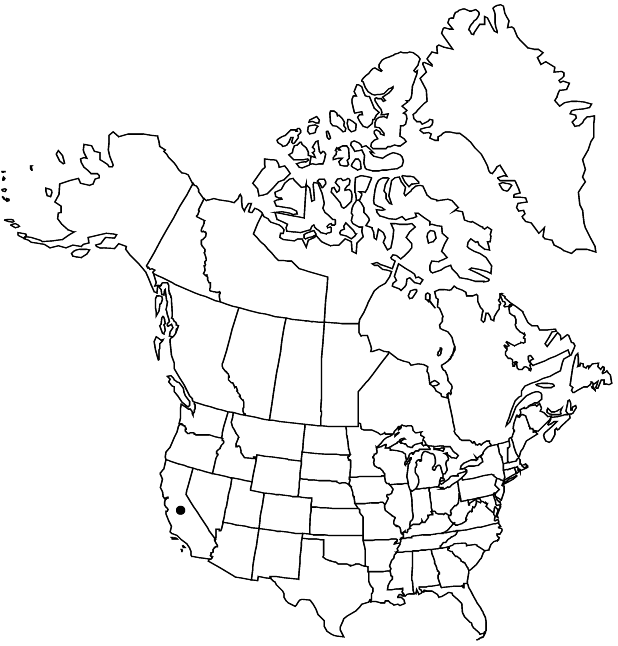Dudleya pulverulenta
New N. Amer. Crassul., 13. 1903 ,.
Caudices (becoming decumbent), simple, to 50 × 4–10 cm, (densely covered proximally with old leaves), axillary branches absent. Leaves: rosettes solitary, not in clumps, 30–80-leaved, 25–60 cm diam.; blade chalky white, oblong to oblong-oblanceolate, widest at base or in distal 1/3, 8–25 (–30) × 3–10 [–13] cm, 3–10 mm thick, base 3–8 cm wide, apex acuminate to cuspidate, surfaces puberulent, chalky. Inflorescences: cyme mostly densely 2–5-branched, obpyramidal to cylindric; branches twisted at base (flowers on underside), simple or 1 times bifurcate; cincinni 2–5, (in age straight and spreading to erect), 10–30-flowered, circinate, 10–50 cm; floral shoots 30–100 [–150] × 0.5–2 cm; leaves 20–70, spreading to deflexed, (becoming red), cordate-ovate to suborbiculate, 20–50 × 15–30 mm, apex acuminate. Pedicels pendent or declined, in age sharply bending near middle to bring fruits ± erect, 10–35 mm. Flowers: calyx 5–9 × 5–8 mm; petals connate 6–10 mm, red, 11–19 × 2–4.5 mm, apex acute to obtuse, tips erect; pistils connivent, erect. Unripe follicles erect. 2n = 34.
Phenology: Flowering early summer.
Habitat: Coastal side of mountains, cliffs and dry hillsides
Elevation: 0-1500 m
Distribution

Calif., Mexico (Baja California)
Discussion
Dudleya pulverulenta is one of the largest and most distinctive species of the genus, easily recognized from a distance, even without flowers. All parts of the flowering shoot often are farinose. It has the widest range of any dudleya, over 1000 kilometers, from Monterey County to the Sierra San Borja in north-central Baja California. It is a beautiful plant, much admired but less easily grown than some others.
Hummingbirds often visit Dudleya pulverulenta, hovering beneath the pendent flowers and thrusting their bills up into them for nectar. The species shows a syndrome of traits that K. A. Grant and V. Grant (1968) found in hummingbird-pollinated plants of western North America: open inflorescence; pendent flowers on long, slender pedicels; long red corolla with long tube; and (as shown by G. A. Levin and T. W. Mulroy 1985) high nectar yield. Although hummingbirds also visit other species of the genus, this one seems especially adapted to them as pollinators, having, for example, about the longest corolla, with the longest tube, and the highest nectar output. While most other dudleyas have flowers erect along the adaxial side of the cincinnal branch, here the young branch twists at the base, putting the flowers on the abaxial or outer side, where they are declined or pendent. After flowering, each pedicel bends sharply to bring the fruit erect, as it is in other species. This syndrome is nearly unique to D. pulverulenta and the related D. anthonyi, of northern Baja California, although variously approached in forms of the related and intergrading D. arizonica.
Selected References
None.